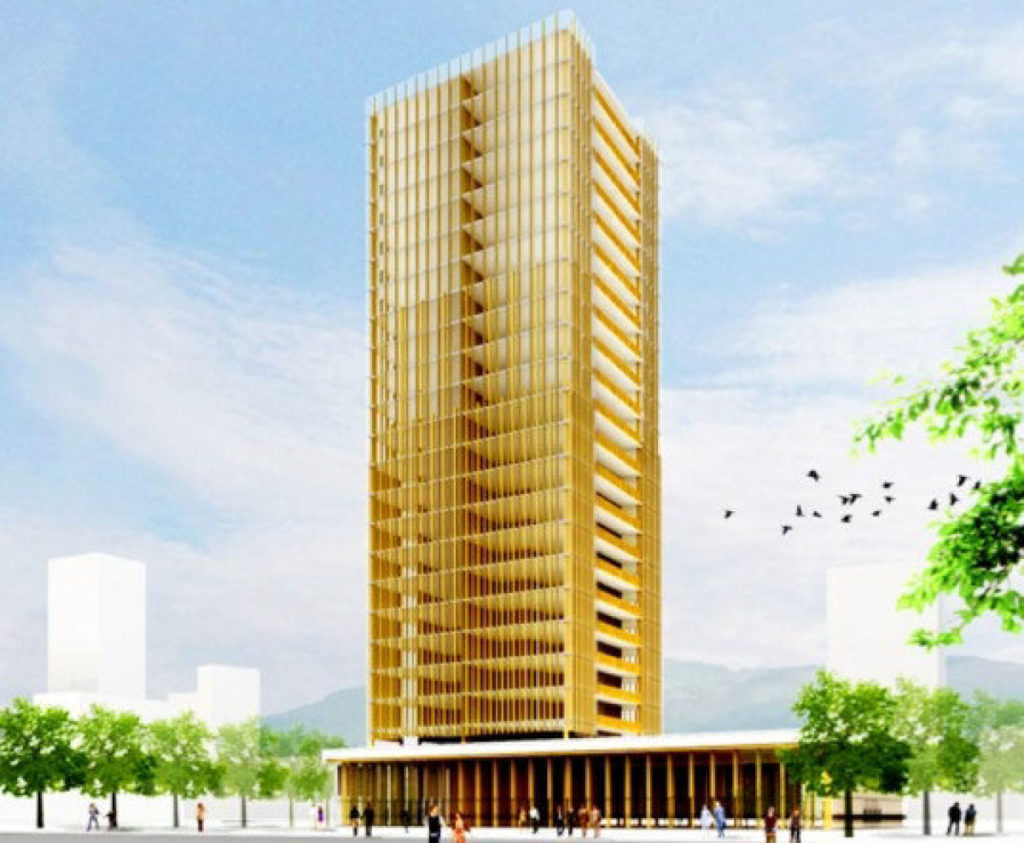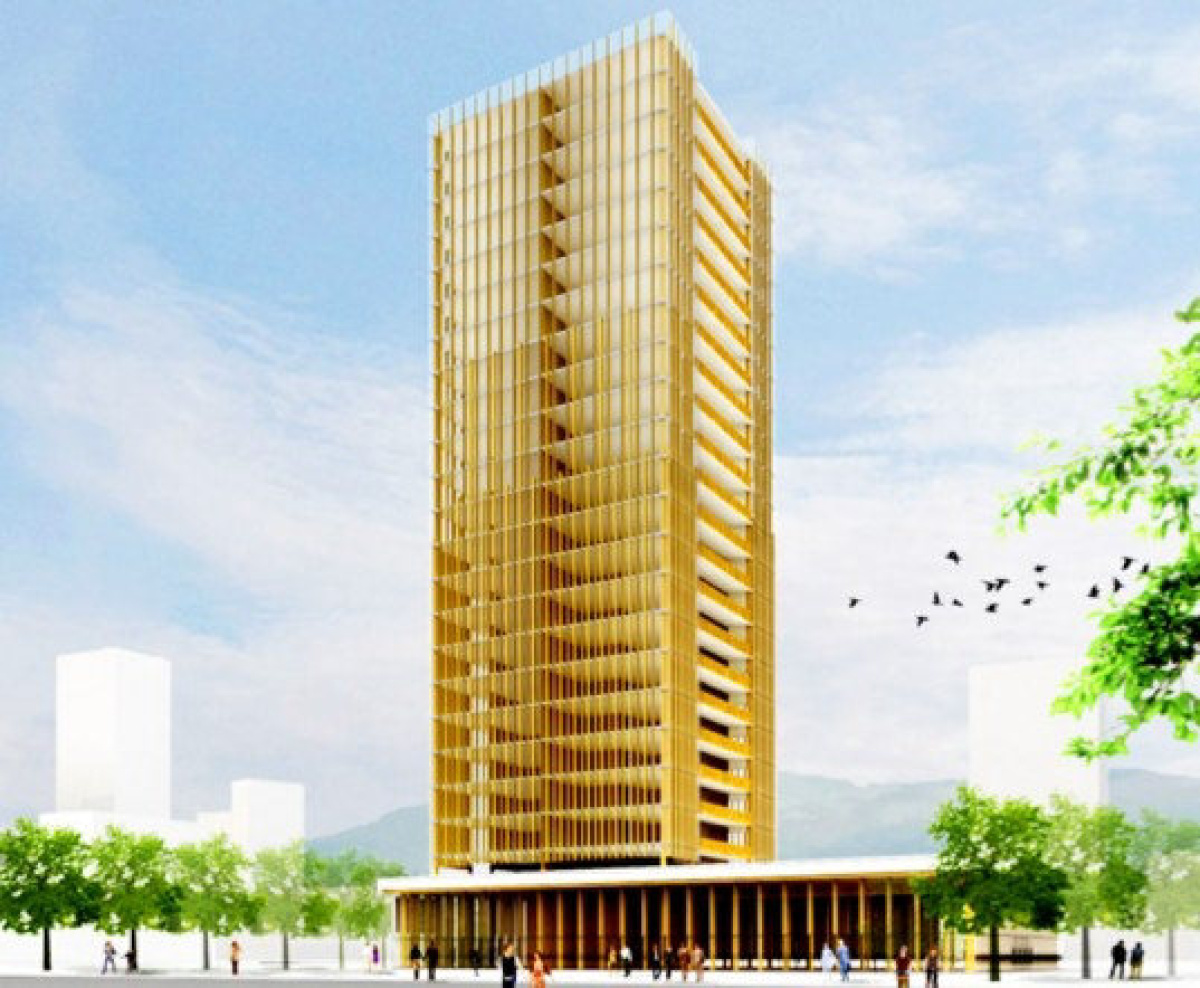On the horizontal side of London, a new but challenging mast will rise. The usual glass of the skyscrapers will be supported here in a structure of a millenary material, forgotten and rediscovered now as a great sustainable promise: wood. In it will forge the soul of a building 200 meters in the heart of the Barbican, the neighborhood designed last century to introduce residential housing in the heart of London.

The PLP architects’ study, the Smith and Wall engineers and the University of Cambridge Natural Materials Innovation Center presented it in April as a pilot project with the mayor of the British capital under the robust name of Oak Timber Tower Of Roble), now replaced by the more practical mote The Splinter (the splinter). It would consist of a thousand houses and would be a triumph for the movement that claims to replace steel and concrete beams with processed tree trunks, and not only in medium-height houses, also for large buildings.
Competition Up
The first to look over the shoulder at many concrete neighbors was the Treet block of flats in Bergen, Norway, which opened in 2015. But its 14 floors have been challenged by the 18 of a university residence already under construction in Vancouver (Canada), which is expected to be completed in 2017.
The pride of the title will not last long, given the accumulation of projects already announced: the Haut building will rise in the city of Amsterdam, 21 plants boldly overcome by 40 of the Trätoppen of Stockholm. In the New York kingdom of skyscrapers, Skidmore, Owings & Merrill, designers of the new One World Trade Center in Manhattan, have moved tabs with a study on the key to this sudden love for natural matter: its least impact on the environment environment.
Works without noise or debris
As architect Michael Green stated in a TED talk, while steel and concrete processing account for 3 to 5 percent of human CO2 emissions, a cubic meter of wood stores almost one tonne of that gas. Its use would therefore help to reduce the carbon footprint of the construction, than in EE. UU. Exceeds that of transport by 14%. This new horizon has come thanks to technological innovations in the field of architecture and materials engineering, especially the contralaminated panels or CLT.
They are tailor-made and ready for assembly. Its lightness can reduce to a quarter the weight of the building, which thus requires smaller foundations. And the system allows “a much faster execution, without debris or noise, besides more useful meters and a great energetic efficiency” by the insulating effect of the panels, as Ana San Millán, commercial director of Altermateria, a specialized Spanish consultancy In construction with these materials. His company advised the highest construction in Spain: the five-story apartment building in Lérida designed by the architect Miguel Rodríguez Nevado. Its inhabitants also enjoy a sound insulation 12 times greater than that of concrete.
What if it burns?
Despite these advantages, we continued to associate a house that was forest with the risk of fire. However, the architects who build them agree to remind us how laborious to light a bonfire with only logs. These need a continuous source of heat and, if ignited, the flames carbonize their outer layer and transform it into a protection for the interior. In addition, they do not collapse like steel, “laminated wood is the material that best meets current fire regulations without additional treatment,” says San Millán, who also highlights the excellent response to possible earthquakes “because it absorbs better than other materials. Dynamic forces “.
Fear of termites is also clear: the humidity does not exceed 14% and – although it is no longer nutritious for external agents – a biocide is applied in areas at risk. Beyond the work itself, there is also an opportunity for relaunching the forestry sector. The London project, for example, will come from D.R. Johnson, a traditional Oregon (USA) sawmill that has turned to the future for innovation.
The exciting challenge now focuses on testing and putting into practice materials and techniques in every possible environment. Starting in the London sky.














